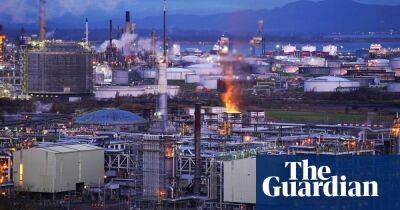The Guardian view on the future of buildings: make do and mend
A controversial decision by London’s mayor, Sadiq Khan, to allow the demolition of a flagship Marks & Spencer store on London’s Oxford Street is one of the highest-profile instances so far of what is certain to become a wider debate about embodied carbon. This crucial term, which refers to the carbon emissions of a building over its lifetime, urgently needs to be brought into wider circulation. In the UK, buildings are estimated to be responsible for 23% of all emissions.
With its millions of Victorian and Edwardian terraces, the UK has some of the oldest housing stock in the world. So the idea of a “throwaway building culture”, as Will Hurst of the Architects’ Journal describes our contemporary attitude to construction, takes some getting used to. But developers, particularly of large-scale projects, routinely look for a blank slate on which to place a new edifice. Demolition is part of what the construction industry does.
Emissions calculations are more complicated than in other sectors because of the role played by time. Arguments over the Marks & Spencer decision, and other proposed demolitions such as that of the fire-damaged Assembly Rooms in Derby, arise because short-term and long-term impacts have to be weighed along with other considerations. In environmental terms, the question comes down to whether the benefits of a new, energy-efficient building will offset the emissions of a demolition and construction project.
Recycling, refurbishing and retrofitting are the way forward, and architects and engineers have come up with some ingenious solutions. One block of flats in Copenhagen reused the brick walls of a brewery by cutting them into panels. But such innovative examples of reuse aside, Lord Deben, chairman of
Read more on theguardian.com



![Axie Infinity [AXS]: Identifying whether its best days are behind it](https://finance-news.co/storage/thumbs_400/img/2022/5/15/25712_ro1.jpg)










![Fantom [FTM] trumps TerraUSD [UST] as investors were dumbfounded by…](https://finance-news.co/storage/thumbs_400/img/2022/5/15/25699_ugl.jpg)



